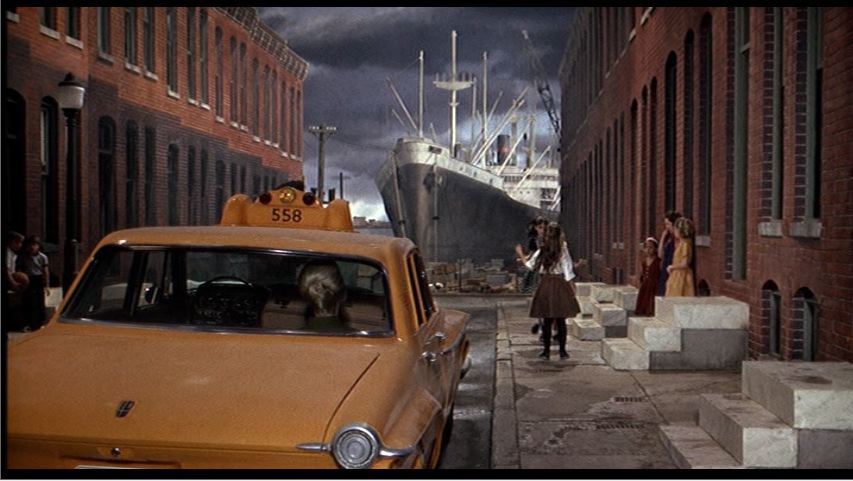- »"Tackiness"«
- Red/White
- Yellow/Grey
Tackiness as a Virtue
Several examples of the film's alleged amateurish qualities spring up within the same sequence: 1
Wood, Robin. “Marnie” Hitchcock’s Films Revisited. (Columbia University Press, rev. ed., 2002) :. 173-197.
The motion of the horse is clearly (and poorly) accomplished by projection.
By the 1970's, such ostensibly awkward trick shots as these were technologically outdated. Yet, bearing in mind that Hitchcock is an established master of cinema, is it not both plausible and eminently likely that the mechanics of this shot were designed to cue the artificiality of Forio as a form of freedom? Simlarly, Herrmann's score, with its lush high strings and fantasy-coded harp voices, hints at the falseness of the freedom-as-presented by overplaying the exhiliration of the horseback scene. As Marnie leaves the realm of the horse and arrives at the glum reality of her mother's apartment - the same location responsible for her mental imprisonment - the strings plummet to the low reaches of their registers.

Mama's apartment sits in a stage-lit set against a clearly painted backdrop.
Two of the film's diagetically exterior scenes draw fire for their transparently interior setting. The facades of Mama's apartment and Rutland's each bask in gloriously staged lighting against gaudily painted backdrops. Once again, Hitchcock violates the conventions of cinema to a specific end: both Mama herself and Rutland's (by way of its money) represent avenues through which Marnie wrongly believes that she might find freedom. Both are false freedoms, thus Hitchcock stages each in a commensurately false manner.